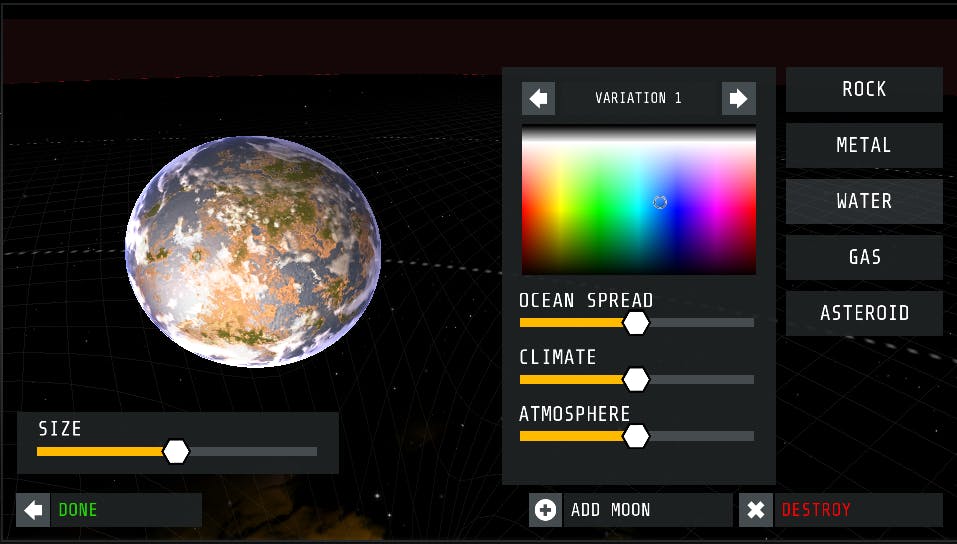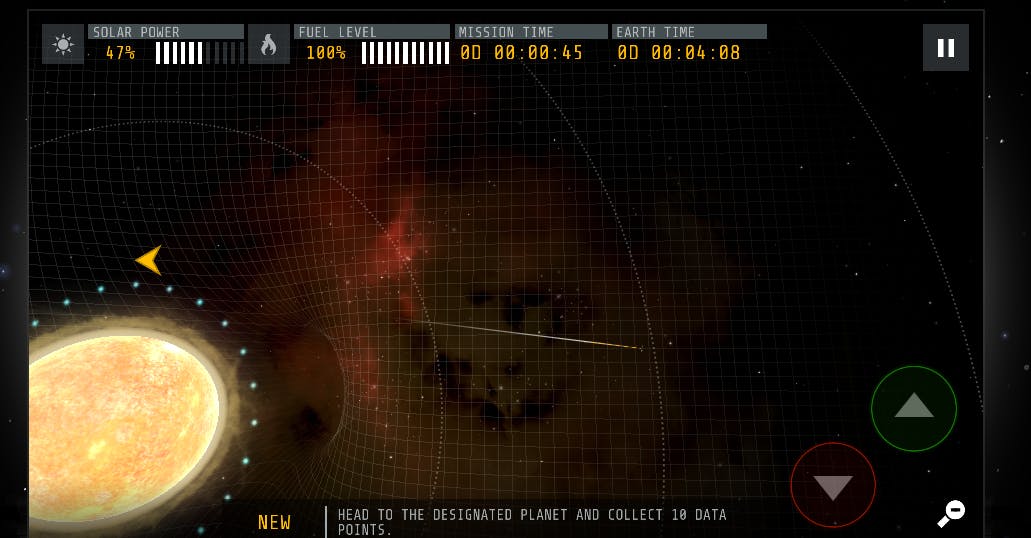Interstellar, the next Christopher Nolan production, doesn’t come out until Nov. 7, but now you can explore the real physics behind the film with the Interstellar app. Yes, movies have apps now. But this one is worth checking out for science geeks.
Nolan’s notorious secrecy around his films means we don’t know much about Interstellar, but we do know that it stars Matthew McConaughey and features travel to distant solar systems through wormholes. The trailers hint that climate change has ravaged Earth and McConaughey’s character, a retired engineer, decides to trust a scientist who has figured out a way to search the stars for a new home. It was filmed in Iceland, Alberta (the residents of Fort McLeod endured an artificial dust storm for the filming), and in Los Angeles.
Here’s the science geek part: Kip Thorne, a theoretical astrophysicist formerly at the California Institute of Technology known for his work on black holes, gravitational waves, and wormholes, is the science advisor for the film. He is also publishing a guide to the science behind the film.
Last year’s Gravity enthralled viewers with special effects and sparked heated discussions about the film’s scientific accuracy. Neil deGrasse Tyson even live-tweeted his thoughts. Could Interstellar deliver a blockbuster hit along with more realistic science? The answer will have to wait, but for now the impatient can get a preview with the newly released app. It’s available to play for free in browser, via Google Play and on iPhones and iPads.
The Interstellar app is also based on Thorne’s theories. A preview offered to The Daily Dot gave me a chance to dive into the app before its release this morning.
The app is basically an exploration game. Each user gets a home solar system, which you can customize with planets, moons, and asteroid belts. All the elements can also be tweaked. Do you want a high energy, blue-white star for the Sun, or a calmer red star? Gas, rock, metal, and water planets are available.

When playing God in your own solar system, there are some constraints: There’s a limit to the number of planets you can rule over and once you’ve established some orbits, the eccentricity of the inner orbit is limited by the outer. Fingers crossed that those limits are based on science.
The actual game play involves navigating a starship—the Endurance—through different solar systems. You can explore systems created by other users and choose to embark on journeys. While exploring, you can collect data to send back to Earth, orbit planets and stars, and try not to crash. Each journey has a pre-determined set of systems to visit, goals within those systems, and the occasional black hole to navigate.
It took me some time to get used controlling the starship. But then, I’ve never excelled at driving games—I overcorrect and panic. When you approach a planet or star to orbit, a nerve-wracking pulsing buzz starts. The orbit area turns orange and sets off a kind of timer.
To get into orbit, you must keep your ship going and in that orange/timer zone without changing your speed too much. Once the timer dings, ta-da!, you are in orbit and can stop panicking. From what my paltry game-playing skills can deduce, you need the white direction indicator to curve gently around the planet or star but stay within that orange zone. There is also a point where no matter how frantically you click or poke the screen, you will crash into the planet or star.
Underlying the planets, stars, and moons is a faint grid that dips and bends according to the gravitational pull of the bodies. This was my favorite geeky detail.

There’s also the fact that your starship loses time relative to Earth the longer you stay near high gravity objects—this is relativity in action.
My first journey had four stages. I would head to a couple of solar systems and gather data, navigate a black hole, and then go to a final solar system. The first goal was to reach and orbit a planet in 60 seconds.
Well, I crashed into the planet with 45 seconds left to go. Eventually, I got the hang of it. Navigating the black hole was a bit frustrating, until I figured out that I could use my arrow keys instead of clicking frantically on opposite sides of the screen.
Overall: It kept me entertained. The graphics look similar to the snippets of interstellar travel in the film’s trailers. Plus, I am too excited by the idea of traveling from solar system to solar system via wormholes to leave that to the movie. I’ve got to try it for myself, via an app.
Thorne wasn’t available for an interview for this story, but we can look at his theories on wormholes and time travel. These theories were already popularized through the book and movie Contact after Carl Sagan consulted Thorne for the method of travel the dodecahedron machine takes to transport Ellie Arroway and her companions to meet aliens (please read this book, it is awesome).
In a fascinating Q&A with Discover magazine, Thorne explained how wormholes could be used to travel through time:
A wormhole is a hypothetical warp of space that can serve as a shortcut between two different regions of the universe. It’s sort of like if a worm drilled a hole through an apple from one side to the other. If you were an ant and you lived on the surface of the apple, there could be two routes to get from one side of the apple to the other. One is around the outside, on the surface, which we can think of as being like our universe’s gently warped space; the other is down the wormhole. In the case of our universe, the wormhole might be quite short and still reach from, say, our solar system to the center of our galaxy. General relativity says wormholes could exist. When we combine general relativity with quantum theory, we find moderately strong evidence that wormholes cannot exist after all—but we just don’t know for sure yet.
Wormholes were first theorized in the 1920s, but time travel through them depends on navigating the intense forces contained within, which would require some type of material that prevents the wormhole from collapsing. Still, researchers like Thorne haven’t been able to squash the wormhole time travel idea. It may be possible. Thorne and some colleagues even wrote a paper about it. Don’t worry though, Thorne doesn’t think you’d be able to go back in time and kill your father or create other such paradoxes:
If any highly advanced civilization attempts to make a time machine for backward time travel, quantum effects will cause the time machine to begin to self-destruct explosively at the moment you activate it. We don’t know whether the explosion is strong enough to always destroy the time machine.
In that same interview he mentions that his work on Interstellar will build on those theories. That interview was from 2007, so we can hope that the intervening time has been enough to get some real science in a popular movie.
Screenshots via Interstellar app/Paramount Pictures


